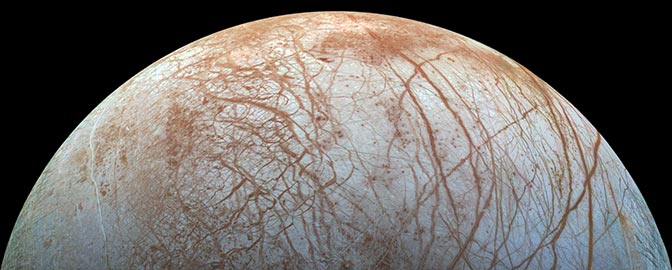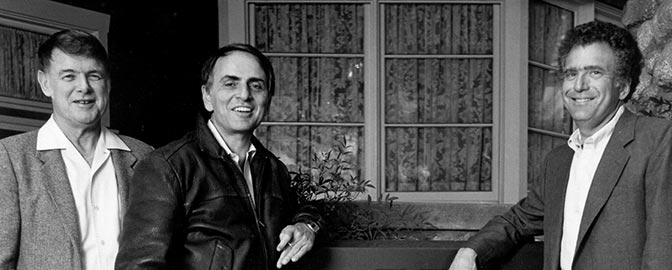How to Save NASA Science: A retrospective on the second 2025 Day of Action

Written by
Jack Kiraly
Director of Government Relations, The Planetary Society
October 10, 2025
On Oct. 5, 2025, advocates from all over the country attended a training session for the Save NASA Science Day of Action the following day.
Among this group of roughly 250 people were scientists and researchers, engineers and corporate executives, students and labor leaders, celebrities and fans. This assorted group of advocates represented 38 states, urban and rural communities, and nearly every shade of the political spectrum. And impressively, three-quarters of them were about to embark on their first-ever visit to Capitol Hill to advocate for space science.

Unlike many other groups’ congressional visit days, these participants were not sponsored by any organization or benefactor. They paid their own way to come and stay in the nation’s capital city because of a common interest: protecting the future of the U.S. space science program at NASA.
The scientific exploration of the Cosmos, as has been led by the United States, has faced immense uncertainty and fiscal strain over the past eight months. The professional workforce has been demoralized by threats of layoffs and work stoppages. Students have seen internships and funding opportunities revoked. Offices have been closed with little to no warning. And space missions sending back data or preparing to go to the launch pad have been threatened with cancellation.
It is only in recent weeks that the White House Office of Management & Budget (OMB) has begun to retreat from its stance of imposing “extinction-level” cuts to NASA, but many of those same threats remain.
It is under these circumstances that The Planetary Society decided to host an unprecedented second Day of Action as a part of the Save NASA Science campaign we launched earlier this year. The record-setting number of attendees, the support we’ve seen from Congress, and the massive coverage by the media illustrate the strength of this movement.
Timing is everything
When Planetary Society Chief of Space Policy Casey Dreier and I proposed the idea of doing a second Day of Action to our leadership, we had no idea that the government would shut down amid the funding fight over healthcare. But we knew that early October was a critical time for the annual budgeting process in Congress.
Typically, this time period is when Congress has abandoned Regular Order (passing all 12 appropriations packages individually) in favor of striking a deal on a single funding package that is a compromise between the House and Senate. In late July, the House and Senate had just introduced their own budget proposals for NASA, functionally keeping the agency fully funded in fiscal year (FY) 2026; a clear rejection of the OMB budget request that zeroed out 41 projects and curtailed funding for research and technology development.
New NASA budget would shut down 41 space missions
Proposed NASA cuts would cancel dozens of space missions — including spacecraft already paid for, launched, and making discoveries.
The House budget included objectionable cuts to Earth Science and Heliophysics, but they paled in comparison to the White House proposal. The Senate kept NASA and its constituent directorates, like Science and the Office of STEM Engagement, with functionally flat funding. The Senate also fully funded the National Science Foundation. It’s worth noting that the House bill was likely written before H.R. 1 passed, which included more than enough supplemental funding for the Exploration Systems Development Mission Directorate to offset increases in the House budget and restore other elements of the NASA budget to full funding.
Given the similarities in these proposals for NASA’s FY 2026 budget, this Day of Action would have been our way to lock in support for the Senate numbers with key provisions in the House bill at an early stage in the negotiations.
But the aforementioned threats only intensified over the summer. Mission teams were forced to develop termination plans that would see healthy spacecraft turned off effective Oct. 1, some 4,000 civil servants were compelled to leave NASA, the agency’s competitive science grants program (Research Opportunities in Space and Earth Science or ROSES) was eviscerated by 80%, and NASA staff were being told to plan to implement the OMB budget cuts in the likely event of a Continuing Resolution (CR), breaking with tradition. We didn’t know what to expect would happen in the new fiscal year. This necessitated an escalation of the scope for the Day of Action. We needed backup.

Under the FY 2026 White House budget proposal, NASA's civil servant workforce (as measured by FTEs, or Full-Time Equivalent hours) would fall to its lowest levels since FY 1960.
Download OptionsA team effort
“If you want to go fast, go alone. If you want to go far, go together.”
Or so the adage goes. As we began to organize the event, we reached out to colleagues across the scientific, academic, and public advocacy communities to find who else was ready to speak up. What began as a handful of partners quickly became a chorus. Each organization brought its own constituency — researchers, educators, students, engineers — and each amplified the urgency of our common refrain: Save NASA Science.
By the time of the event, we had involved a total of 20 organizations in this coalition:
- American Association of Physics Teachers
- American Astronomical Society
- American Geophysical Union
- American Institute of Aeronautics and Astronautics
- American Society of Gravitational and Space Research
- Association of American Universities
- Association of Public and Land-grant Universities
- Black in Astro
- Ecological Society of America
- Explore Mars, Inc.
- International Federation of Professional and Technical Engineers
- Maryland Aerospace Alliance
- National Space Society
- Scientific Society for Astrobiology
- Stand Up For Science
- Students for the Exploration and Development of Space
- TexSpace Collective
- The Mars Society
- The Planetary Society
- Universities Space Research Association
This partnership transformed what could have been a single-organization advocacy event into one of the largest grassroots science mobilizations ever assembled in Washington. It also demonstrated something essential: space science is not a niche concern but a national one. From planetary science to physics education, from astrobiology to economic development, every part of the space ecosystem depends on sustained federal support for discovery-driven research.
Media takeover
The first rule of communications: nothing happens unless you tell somebody about it.
The Planetary Society’s communications team, run by the incomparable Danielle Gunn, made sure that everyone heard about this historic effort. Months of planning and pitching stories culminated in a press conference in front of the Capitol featuring Bill Nye, Representative Glenn Ivey (D-MD), and leaders from the partner organizations.

We reached beyond the typical space-interested mediasphere to secure coverage on MSNBC, CNN, ABC, CBS, BBC, Axios, and local outlets in nearly every state represented by our advocates. The message resonated. For one day, space science dominated the national conversation — not as an esoteric curiosity, but as a vital part of America’s future.
That’s the power of grassroots advocacy: when hundreds of people take ownership of an issue, it becomes impossible to ignore.
What happens next
It’s easy to think that this Day of Action is a one-off event, a blip on the nation’s proverbial radar. But the work of The Planetary Society and of this campaign to Save NASA Science is ongoing. We have expanded our D.C. presence with the introduction of our first-ever Policy Fellow, Dr. Ari Koeppel. We have enabled tens of thousands of people from every state and congressional district to contact their representatives about this effort. And we have deepened our partnerships with the 19 other organizations that joined us on Monday. We are ready for what happens next.
We don’t know when the shutdown will end. But once it does, the negotiations will move quickly. Our focus now is ensuring that final legislation restores NASA’s and NSF’s budgets to at least FY 2024 enacted levels, protects active and in-development missions from cancellation, and maintains the national investments that sustain research, education, and innovation.
Until then, the best thing any supporter can do is stay engaged. Visit the Save NASA Science Action Hub for updates, opportunities to contact your representatives, and tools to share this message in your community.
Save NASA Science - Action Hub
NASA science faces record cuts. Take action to stop it—we'll show you how.
Conclusion
A friend recently let me borrow his copy of the June/July 1981 issue of The Planetary Report. In it, Planetary Society co-founder and Director of NASA’s Jet Propulsion Laboratory, Dr. Bruce Murray, shares a portion of his testimony to a hearing by the House Subcommittee on Space Science and Applications regarding the future of the space program. At the time, the Reagan Administration had proposed the near-elimination of the space science program at NASA.
In response to a question similar to the common query of all space advocates — “Why spend money on space when we have problems on Earth”’ — Dr. Murray responds by saying “America has to have a purpose which goes beyond today and it has to create a legacy that goes beyond tomorrow… Yet, the results of space exploration provide food for our spirit, carrying it out strengthens our country's economy and its capability.” As accurate today as it was nearly 45 years ago.
Space touches every element of our lives. We’d be wise to remember that not everyone sees the connections. But space exploration also feeds a part of us that can’t be sated merely with living our daily lives. Images of distant worlds, discoveries about our Universe, and the search for a second genesis of life give people hope. Space science is inherently hopeful. It’s therefore on us to include as many people as possible in this journey of discovery.
We can solve problems on Earth and in space; we always have. Similarly, the space community has survived tough times before, but that doesn’t make the task any less daunting. We must stand united in the face of adversity. And that’s what this Day of Action represents to me.
The wind is at our backs, and we have begun to see the results of our advocacy. We must keep going.
Support our core enterprises
Your gift today will go far to help us close out the year strong and keep up our momentum in 2026.
Donate

 Explore Worlds
Explore Worlds Find Life
Find Life Defend Earth
Defend Earth



